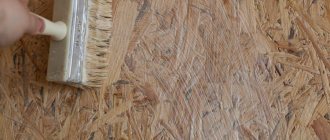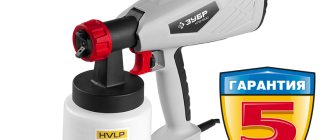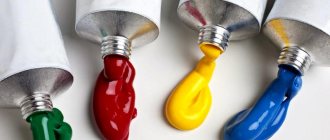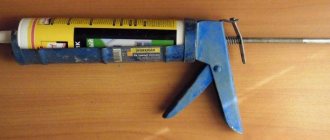All children learn about the world with their hands. Very young children do not yet have the ability to hold a brush or pencil. Therefore, finger paints would be an ideal option for developing a child’s skills. They are intended for creativity of people of any age. The answer to the question of how to paint with finger paints is quite simple. It is enough for the child to show by example what needs to be done and how, and then observe the process and the child’s safety.
Pros of finger paints
- Safety is the main benefit of finger painting. The natural composition of pigments and binders is the most important criterion for choosing materials for drawing, because small children love to taste everything.
- Harmonious development of the baby. Small children experience the world by touch. Finger painting perfectly develops fine motor skills, promotes the formation of a healthy nervous system, and helps the child constantly learn new and unknown things. Everything in the human brain is interconnected; by developing the motor center, you stimulate the speech center, because they are nearby. The speech center is responsible for the thought process and further along an endless chain.
- Finger paints are easily washed off with water and do not spread. They can be used to draw on different materials. Paper, cardboard, glass, plastic, fabric, even bathroom tiles will do. A young artist’s own body can become a canvas. The baby will be happy to try to draw something on his tummy.
- This simple method of drawing does not require additional materials , so finger paints are suitable for babies under one year old, and for older children this is an even more indispensable tool for developing creative abilities. Children are not yet physically able to pick up a brush, felt-tip pen or pencil, but drawing with their palms and fingers is a simple and fun activity.
- The finger drawing technique is simple , and every mother can teach it to her child, even one who cannot draw at all. All you need to do is show in which part of the drawing to leave a palm or fingerprint, and then help the young artist fill in the missing details to get the finished image.
At what age can you start painting with finger paints?
Many mothers buy finger paints for children under one year old. Of course, it is best to wait until the child begins to sit independently and confidently. This happens at 8-9 months. But, if you really want to, you can practice finger painting from 6-7 months.
At this age, the fingers “obey” their little owners very poorly and, of course, the baby will not yet be able to draw with a brush or felt-tip pen, but using finger paints, he will definitely make his parents happy with his first creative masterpieces.
What are the benefits of finger painting?
You shouldn’t assume that finger painting for kids is a useless activity, thinking that the child doesn’t understand anything yet. A small child draws not for the sake of the result, but for the sake of the process. He does not yet put his feelings into thoughts and words, and especially does not understand what exactly he is doing and why.
The baby enjoys new sensations: tactile, visual and even taste. This is how new neural connections are created in his head, and the more there are, the faster he develops.
Adults expect results from children's drawings too early. It is important for mom and dad that the object depicted by the child is recognizable, but a beautiful picture does not indicate creative abilities. Creativity is a process. Your baby's blots reflect the world as he feels it.
Finger painting is pure self-expression that is possible at any age.
Vivid childhood experiences affect the child’s psychological health. When a child is busy doing something pleasant with an important adult, it creates a positive outlook on the world and reduces the risk of developing psychological disorders in the future.
Drawing lessons should not be long and tedious for your child. A few minutes is enough. During the drawing process, be sure to praise the child and tell him about this or that color (what it is, what color it comes in).
Where to buy children's paints for hand painting
You can purchase finger painting paints at most craft stores. Please note that these should be special paints for children over 1 year old if you are planning creative activities with very young artists. As a rule, manufacturers offer paints for children aged 3 years and older.
An excellent choice would be children's finger paints from JOVI or Kalyaka-Malyaka, which have a safe composition. They are easy to wash off clothes and can be easily washed off from different surfaces. They do not have an unpleasant odor. And at the same time they allow you to create bright and colorful finger drawings. They will delight you and your child, giving a lot of joy and positive moments.
Preliminary preparation
The paint packages say that they are recommended for children over 2–3 years of age. Many parents have learned from their own experience that they can start drawing much earlier.
The smaller the baby, the more seriously you need to approach the preparatory process so that an enthusiastic child does not paint everything around. Whether your child will love drawing depends on the first lesson. Make sure that the child is fed, does not want to sleep, and is in a good mood.
Before you sit your baby down at the table, prepare everything you need:
- Dress the young artist in clothes that you don’t mind getting dirty.
- Put on an oilcloth apron.
- Prepare a sheet of thick white paper. It can be completely replaced with the remnants of wallpaper using the reverse side.
- Take a little paint of different colors and put it in small containers, such as plastic lids or toy cups.
- Prepare wet rags and napkins.
DIY finger paints for kids
Of course, today you can buy finger paints at any children's goods store. But, unfortunately, store-bought finger paints cannot be eaten. However, we can offer you a delicious recipe. You can try to make them yourself from simple products available in every home. Here's not just one recipe for finger paints for kids, but two + videos.
How to make finger paints at homeRecipe No. 1 Thoroughly mix flour (0.5 kg), salt (3 tablespoons), water and vegetable oil in a blender or mixer. The result should be a mass reminiscent of sour cream. Adjust thickness and liquidity by adding a small amount of flour or water accordingly. Pour the resulting mass into small jars and add vegetable dye: carrot juice, red beet juice, etc. You can also use food coloring and Easter egg paint. Recipe No. 2 Take some fine-grained porridge (preferably instant porridge), pour beetroot or carrot juice into it. And that's it, the paints are ready. |
DIY finger paints in 5 minutes!
Popular products
The most famous finger paint companies are located in Europe:
- Djeco is a French company that has been producing original children's educational toys since 1954. One of her products is finger paints, which are suitable for both children under one year old and young artists from 6 years old. The most complex models have beautiful plastic stencils in the form of funny animals attached to the lids so that small parts do not get lost. djeco finger paints are an excellent choice; the child will be delighted with their rich colors, and the parents will be delighted with the fact that the child is already creating his first artistic masterpieces.
- Jovi paints are no less popular among young mothers, because the company boasts that it differs from others in a variety of high-quality products, whose products can be seen on supermarket shelves in at least 50 countries! Jovi paints for children's toys have been on the global market for creativity and self-expression for 78 years. The bright colors of jovi paint are liked by all children without exception. And their parents are pleased with the low price and good quality of jovi paints.
By the way, they can also be successfully used as safe paints for wooden toys. With the help of jovi paint, a boat, house or pyramid will become even brighter and more elegant.
- The Russian brand Molly specializes mainly in products for children under 7 years old. Exciting educational games, soap making, bath fizz, making sponge balm, drawing kits for kids and much more interesting things. Molly finger paints are an option for picky mothers who are confident in the advantages of domestic children's products. This set of paints also includes pet templates.
- Trolls is another brand under which paints for the little ones are sold. The products are absolutely safe for children's health. The set of Trolls finger paints includes only 4 colors: red, yellow, green, blue. But on the lids of the jars there are funny stamps that will inspire the young artist to create a colorful masterpiece.
Remember that it is best to buy paint from trusted manufacturers. When choosing, be sure to read the ingredients. Here is a list of companies whose product quality is always at a decent level:
- Crayola;
- "Ray";
- Erich Krause;
- SES;
- "Orange Elephant";
- "Kalyaka-Malyaka";
- Artberry.
Any of them can be used by children as paint for wooden toys.
Finger painting - first acquaintance
Preparation for the process
- Select a surface to draw on. The bigger, the better. A sheet of Whatman paper works well, ideally if you have a piece of old wallpaper. The prints will be more interesting thanks to its texture, and the lessons will be more fruitful. You can draw in the bathroom. Another interesting option is an oilcloth tablecloth.
- Dress your child in things that you don’t mind ruining. The paint will be everywhere. You can wash it, but do you really want to spend extra effort on removing stains? It is better to select a set of clothes specifically for drawing classes.
- Place yourself away from soft sofas, armchairs and other pieces of furniture and decor that are difficult to wash.
How to paint with finger paints
The ability to draw with your hands without special tools provides ample scope for creativity. Imprints are made from the child's fingers, palms, and legs. For children under 3 years old, drawing will be spontaneous. Let your baby create without thinking about the shape and name. Show your child how he can leave fingerprints on a piece of paper, how he can draw lines or mix colors. Start learning with one can of paint, gradually increasing the number of colors to paint.
Gradually make the task more difficult, for example, paint your palm and place it against a sheet of paper. Show your child what imprint will be left from an open palm and from a palm with clenched fingers.
If your child remains indifferent to the process, do not be upset. This means that he is not ready yet. You can help him, show him, but don't insist.
You can also use stencils and stamps for drawing. Typically, stamps are sold in one set with finger paints. You can complete the creative set yourself: cut out the stencil from cardboard and cut off a small piece of sponge. Place the stencil on a piece of paper and give your child a sponge after dipping it in the paint.
You can also cut out shaped stamps from a sponge. Typically, painting with a sponge brings children complete delight.
Different prints are obtained from crumpled paper, fabric, or a plastic bag. Playing with texture will make drawing even more fun.
Templates for finger drawing on a sheet of paper will help you navigate.
Another option is special pictures for finger paints.
Thinking about how to teach a child to paint real objects with finger paints on their own: flowers, the sun, a house, animals, mom, dad, should not be earlier than 3 years. Don't get attached to templates. In the imagination of children, a flower may look completely different than in the imagination of adults.
Your task is to teach how to observe the real world, but not to alter your inner vision.
How to prepare for drawing
This is perhaps the main question that worries many parents. The cleanliness of the room after drawing, as well as the parents’ interest in repeating the experiment, depend on the degree of preparation.
To begin, choose a place where the drawing will take place. It is better to always draw in the same place so that later the child does not go beyond the designated boundaries. This could be a table or a corner on the floor. If you paint on the floor, remove the carpets and rugs; you can cover them with oilcloth. It is also better to cover a sofa and other upholstered furniture with oilcloth. The best canvas for drawing is what paper or large sheets of A3 format. Ordinary album leaves will probably not be enough for your child’s creativity to fly.
Before drawing, put on clothes for yourself and your baby that you don’t mind. The paints are easy to clean, but it never hurts to be on the safe side. If it’s warm at home, you can leave the baby in panties or a diaper - it will be easier to wash. You can also buy a special waterproof apron in art stores that will protect you from paint.
how to teach a child to roller skate
Drawing with finger paints consciously
If your baby already knows well how to use finger paints, that is, he understands that in order to get a certain image, you need to dip your fingers in a jar of paint and then run them over a sheet of paper, it’s time to teach him to create meaningful drawings with his hands, using basic finger drawing techniques.
Finger painting
So – what to paint with finger paints? The first finger drawings can be quite simple: ask the baby to leave fingerprints in a chaotic order. When the paint is dry, use your imagination and have a fun activity with your child, turning the blots into finished images.
This can be done by drawing in the missing details with a pencil or felt-tip pen. When the baby gets older, he himself will be able to turn ordinary dots and circles into balloons, flowers, animals or people.
Drawing with palms
Since it is difficult to restrain a child from the desire to apply paint to the entire surface of the palm, and not just to the fingertips, palm painting can be mastered in parallel with the finger painting technique.
Drawings with palms are usually larger, brighter and more colorful. You can finish drawing them not only with pencils and felt-tip pens, but also with the same finger paints.
Making drawings from palms
Leaving several handprints so that you get the intended complete composition is quite a difficult task.
So, it is obvious that the best way to start a child’s creative development is by offering him finger paints. They are non-toxic and completely harmless to the health of the child, even if he tastes them.
Finger paints for kids are water-based and have a jelly-like consistency, so they don’t drip or spread if the jar accidentally turns over. They also dry slowly and are easily washed off your hands. You can remove paint that gets on clothes with any detergent.
Finger paints are an excellent means of developing a young child. They contribute to the development of not only the creative, but also the intellectual abilities of the child.
Finger painting helps develop the baby's fine motor skills, and it activates the activity of the area of the brain adjacent to the speech area of the brain. Thus, with the development of fine motor skills of the hands, the child’s speech abilities also develop. In addition, tactile sensitivity (sensations from contact with objects and materials) also develops.
Benefits of classes
Drawing in an unconventional palm technique will allow the child to develop the muscles of his hands, and parents will be able to establish psychological contact with the baby. Such activities not only entertain, but also bring benefits:
- develop motor skills;
- give new knowledge about the shapes of objects;
- teach color recognition;
- develop taste.
Regular finger painting classes allow you to strengthen your hand muscles and develop motor skills, and this has a beneficial effect on speech and abstract thinking. The child will be able to learn about new objects by depicting them, and will also become familiar with geometric shapes, different colors and shades. Such home lessons will help parents prepare their child for the first grade of school.
Small objects help develop coordination of movements. Children will be able to expand their horizons and gain new tactile and visual sensations. The child will receive many pleasant emotions from creative activities, he will develop a taste and a craving for beauty. Children express their experiences through colors. Each drawing reflects the joys and fears of a child. Parents should pay attention to what exactly he depicts.
You can start classes from 10-11 months, but the baby should draw only with the help of his parents. It is better to make the first lessons short - 5-10 minutes. Over time, they can be extended to 20-30 minutes.
You should not force your child to draw; it is better to observe his mood. Creativity requires a good mood and inspiration.











